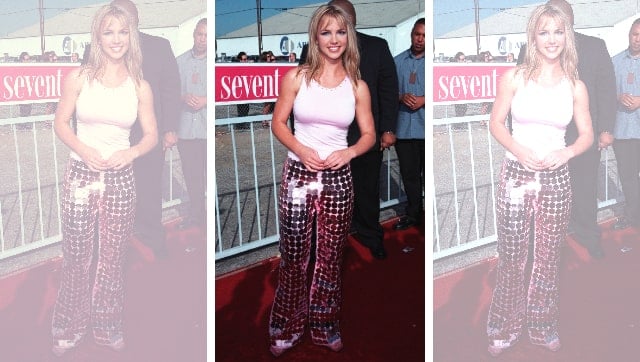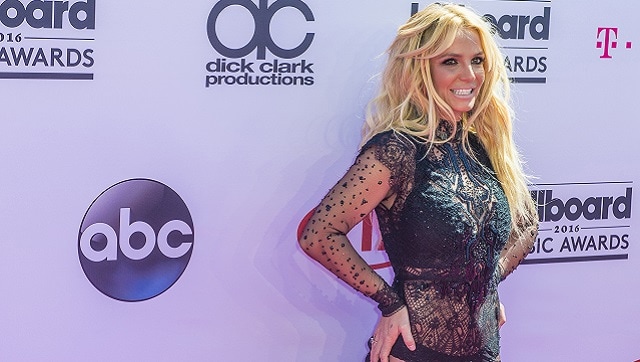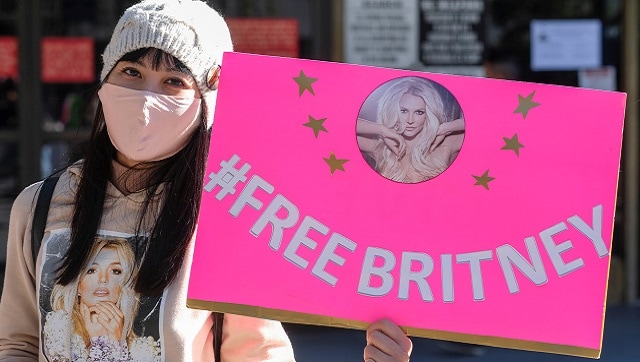“Lolita-esque.” We’re at the part of the new Britney Spears documentary (from The New York Times Presents series, now available to stream on Discovery+ in India) where a TV presenter is commenting on the pop star’s persona. This moment is preceded by another, when a younger Britney has delivered a powerful vocal performance on a talent showcase. The host, Ed McMahon, comments on her lovely eyes and asks if she has a boyfriend, to which she replies with a “No, boys are mean”. “Even me?” McMahon asks. The little girl — all of 10 at the time — is nonplussed, before coming back with, “Well, that depends.” The studio audience laughs; this is all just a bit of cutesy humour. The “humour” is less cutesy when a teenaged Britney, fresh off the success of ‘…Baby One More Time’, is asked about her breasts in an interview. Straight off the bat, no lead-up, just directly launching into a conversation about her breasts, and whether or not she’s had implants. (Much like interviews with a just-turned-18 Lindsay Lohan were wont to.) Other interviewers ask Britney — again, straight out — if she’s a virgin. A little later, the documentary recaps the end of her relationship with Justin Timberlake, where she is subjected to an interrogation on air about what she did to cause the break-up, while her ex gets to feature on a magazine cover bearing the caption: “Can we forgive him for the sissy music? At least he got into Britney’s pants”. There’s an audio clip too, of Timberlake being pointedly asked during an interview if he and Britney had sex while they were dating — the kind of conversation we’ve learnt to dismiss as “locker room talk”. (Not included in this documentary is the same modus operandi being used on Limp Bizkit’s Fred Durst, egged on by Howard Stern to reveal the details of his alleged relationship with Spears.) There’s a gross nudge-wink quality to these questions, and the nudge and wink are at Britney’s expense. In the same interview where Britney is asked about how she may have “betrayed” Timberlake, she’s also read a comment from the First Lady of Maryland, Kendal Ehrlich — “You know, really, if I had an opportunity to shoot Britney Spears, I think I would” — as an example of the kind of divisive and strident views she inspires. Britney’s face crumples into tears. But it is not this focus on her body and the speculation about her sex life that makes the most indelible impression in this segment of Framing Britney Spears. It is that adjective: Lolita-esque. “Precociously alluring,” the dictionary states, speaking to how “Lolita” has become shorthand for describing a particular kind of person: female, nubile, desirable-yet-chaste, unspoiled-therefore-so-tempting-to-despoil, and incredibly young. A child-woman. It conjures images of a young girl seducing a helpless, hapless older man. It’s a term that’s used often for teenaged female celebrities: Lolita-esque. And yet, the original “Lolita”, from Vladimir Nabokov’s novel, is a 12-year-old girl raped by her stepfather. The middle-aged protagonist, Humbert Humbert, marries Dolores’ (Lolita is his nickname for her) mother with the express intent of having a hold on the child; Humbert grooms Dolores, eventually drugs and rapes her, then takes her along on an extended road trip until she escapes. Nabokov was inspired by the real-life story of 11-year-old Sally Horner, who was kidnapped by a 50-year-old man, sexually assaulted and held hostage for a period of two years. She was rescued, but died at the age of 15. So, “precociously alluring” huh?
***
[caption id=“attachment_9410841” align=“alignnone” width=“640”]  Justin Timberlake and Britney Spears in 2002, at the premiere of her movie Crossroads. Image via Shutterstock/Featureflash Photo Agency[/caption] Scrolling through a gallery of Rolling Stone covers featuring Britney, we begin with the April 1999 edition, with David LaChapelle’s photograph of the 17-year-old lying in bed in a pair of hot pants and bra, Teletubby plushie clutched in one arm, a phone held in the other. Her gaze is suggestive: Britney could be whispering secrets to the person at the other end of the line — or she could be having phone sex. “Inside the heart, mind and bedroom of a teen dream,” the headline says; in-story photos depict her — in a similar state of undress — standing by her shelves of dolls. Another five covers down the line, for the October 2003 edition, Britney is posed only in her panties. Britney is well past her “I’m Not a Girl, Not Yet a Woman” stage; this is the “Toxic” era, the video for which has her wearing see-through bodystocking with strategically scattered crystals. Framing Britney Spears tells us that the pop star was always in control of her image; she wasn’t a puppet being manipulated by a record company, nor was she sexualised against her will — this was her choice. As her stage performances and videos became increasingly explicit, we hear that these were Britney’s creative decisions: she was always the boss, never a puppet. The writer Tavi Gevinson critiques that idea in an essay for The Cut, where she notes: “I can see why a viewer would find relief in concluding that Spears was always in complete control. But it is absurd to discuss her image from that time as though there was not an apparatus behind it, as though she existed in a vacuum where she was figuring out her sexuality on her own terms, rather than in an economy where young women’s sexuality is rapidly commodified until they are old enough to be discarded.” Maybe the truth lies at some midpoint from Gevinson’s essay and the documentary’s perspective, as this exchange from the BoJack Horseman episode ‘Prickly Muffin’ underscores: BoJack: What do you.. What do you think about Sarah Lynn? Diane: Oh, I don’t really think about her all that much. I mean, obviously, I’m a fan of her early work which both satirised and celebrated youth culture’s obsession with sex, but I do wonder as a third-wave feminist if it’s even possible for women to reclaim their sexuality in this deeply entrenched patriarchal society, or if claiming to do so is just a lie we tell ourselves so we can more comfortably cater to the male gaze. BoJack: Uh, what? Diane: But you know, on the other hand, I worry that conversations like this one often dismiss her as a mere puppet of the industry .. BoJack: That’s my same worry. Diane: —incapable of engaging in these discussions herself.. BoJack: Obviously. Diane: —and infantilisation, which is itself a product of the deeply misogynistic— BoJack: So deep. Diane: .. society we live in. But like I said, I don’t really think about her all that much.
***
[caption id=“attachment_9410931” align=“alignnone” width=“640”]  Britney at the 1999 Teen Choice Awards. Image via Shutterstock/ Featureflash Photo Agency[/caption] The question of “control” seems to be central to Framing Britney Spears. How much control did she have over her public persona? Should the conservatorship she was placed under in 2008, after two psychiatric hospitalisations, be allowed to control her more than a decade later, when she seems to be functioning well? And perhaps most significantly, who gets control over her narrative? In the documentary, we hear of US Weekly’s $7-8 million annual budget for celebrity photos, with a goodish share being allocated to coverage of Britney. We see paparazzi pushing into her personal space relentlessly. Initially she plays their game, preening for the cameras, but it gets frightening pretty quickly. The photographers who swarm her every move won’t step back, even when she’s telling them to stop because she’s scared. When she makes some instinctive choices to protect her baby from the crush, she is branded an unfit mother. Matt Lauer gets to ask Britney probing questions about her parenting skills on TV until she breaks down — the same Matt Lauer who has been accused of sexually harassing his female colleagues at NBC for over two decades. On what is possibly the worst night of her life, prevented from seeing her sons by ex-husband Kevin Federline — on the heels of a public meltdown where she sheared off her hair — Britney uses an umbrella to attack the vehicle of a paparazzo pursuing her. An enraged Britney makes for the “money shot”. Her breakdown translates into a TV game show question about “What did Britney lose in the past year?” (Answers: Her husband, her hair, her sanity), and an MTV VMA 2007 performance that is widely panned (and in which her distress is so very evident). The headlines no longer describe her as “Lolita-esque”. They now use the adjective “train wreck”. But Framing Britney Spears glibly lets a different group of people take control of Spears’ narrative: the fans who want to #FreeBritney from an admittedly questionable conservatorship. In fact the documentary begins and ends with this crowd, and devotes a sizeable amount of screen time to them as they discuss mining her Instagram posts for “clues” (like how she once typed out a smiley instead of using an emoji; or how some bland/generic caption is really a sign of how desperately she wants to be liberated). Their interest in the details of her conservatorship and how she feels about it seems to be well-intentioned and disinterested — especially when compared to the schadenfreude implicit in the consumption of content about her “downfall” — but it is in its own way, intrusive and unwarranted.
***
[caption id=“attachment_9410961” align=“alignnone” width=“640”]  Britney Spears attends the 2016 Billboard Music Awards. Image via Shutterstock/Kobby Dagan[/caption] Within its hour-and-20-minutes runtime Framing Britney Spears does a thorough job of showcasing the complete lack of empathy with which she was treated, but what it lacks (apart from any new insights into the pop star herself) is a sense of context. We have a passing reference to the fact that Britney became a star at the same time that Monica Lewinsky, a 22-year-old White House intern, was being vilified for an affair with then 49-year-old US President Bill Clinton. Lewinsky made for such a neat punch-line. So the excoriation of Britney was a tried-and-tested template. Maybe its vociferousness or its unceasingn-ess or the fact that it could now be dished out on so many more platforms was new, but the phenomenon itself was not. (And it continues today, if the tabloid coverage of Meghan Markle — compounded of course, by her race — is anything to go by.) Similarly, there is a lack of nuance in examining Britney’s place in pop culture as well. The documentary quotes Kim Kaiman, the marketing director at Jive Records when the label signed Britney, talking about how Spears was an anomaly at a time when boy bands dominated the music scene. But as Gevinson notes in her (aforementioned) essay, Britney was not anti-establishment, she was The Establishment: a representation of what young women were supposed to be (“young and sexy”), a reaction to musicians like Alanis Morissette. There was a prototype, one adopted by Britney’s contemporaries like Christina Aguilera and Jessica Simpson as well. A snapshot of the music charts that we briefly see in the documentary tells a story of its own: Spears’ …Baby One More Time is at number 1; the album immediately below it is The Miseducation of Lauryn Hill.
***
[caption id=“attachment_9410971” align=“alignnone” width=“640”]  Fans of Britney Spears take part in protest “#FreeBritney” outside an LA courthouse in November 2020. Image via Shutterstock/Ringo Chiu[/caption] There is a scene in the 2018 film Mary Queen of Scots where the protagonist (played by Saoirse Ronan) — having watched the assassination of her secretary in her bedchamber, recently widowed then forced to marry her rapist, and condemned by her own people as a “harlot” — is presented with an ultimatum: she must abdicate the throne in favour of her half-brother, who will rule as regent until her son — parted from Mary as a toddler — comes of age. Desperate for succour, she is comforted by one of her sympathetic ladies-in-waiting. Mary is grateful for her kindness, but points out that is not possible for the woman to comprehend her crisis — only another queen would be able to fully understand her situation. And in the end, this is what makes Framing Britney Spears feel incomplete and superficial. The people the documentary quotes — fans, music writers and industry executives, Spears’ former associates — they don’t actually know what it means to be Britney. In fact, as former MTV VJ Dave Holmes notes, “It’s impossible to know her, so we never knew her. We know her even less now”. Since 2008, Britney hasn’t granted any un-chaperoned, un-vetted, in-depth interviews. Just like she was at the start of her career, Britney Spears is a blank slate onto which people project their fantasies — to some she’s a queer icon, a feminist, a Lolita-turned-train wreck-turned phoenix, a victim, a survivor, a queen. Only another queen could have an inkling of what Britney’s quest for a crown has really entailed.
***
Looking for a deep dive into all things Britney? Here’s a reading list to accompany your viewing — — ‘Britney Spears, Teen Queen’: This 1999 interview in Rolling Stone begins with a description of Spears’ honeyed thigh and ample chest, but does cast a light on early-career Britney. — ‘The Tragedy of Britney Spears’: Rolling Stone’s 2008 cover story by Vanessa Grigoriadis follows the pop star’s downward spiral through a clear-eyed yet ultimately sympathetic gaze. Grigoriadis doesn’t write platitudes about Spears; in fact, some of her observations seem downright harsh, but within that narrative is an indictment of the extremely exploitative ecosystem that surrounded the star. — ‘Miss American Dream’: This 2014 longread by Taffy Brodesser-Akner for Matter - Medium is a fevered ringside view into Spears’ Vegas residency, and what Britney means for a changing city. — ‘Britney Spears Was Never in Control’: “Why did I ever believe a teen girl could hold all the power?” Tavi Gevinson asks, in this essay for The Cut. — ‘Is Britney Spears Ready to Stand on Her Own?’: The New York Times’ 2016 investigation into the circumstances surrounding Spears’ conservatorship informs Framing Britney Spears.
*
Framing Britney Spears is now streaming on Discovery +. Watch the trailer here:


)
)
)
)
)
)
)
)
)



